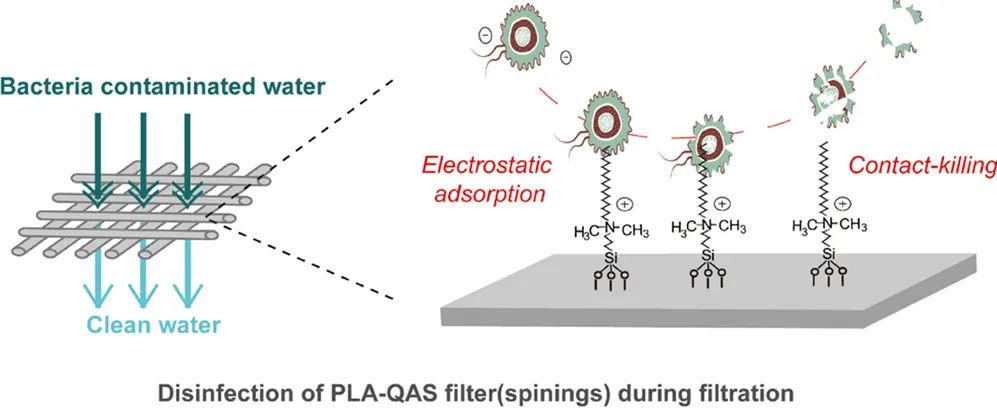The research team from Angel Group Central Research Institute and the State Key Joint Laboratory of Environment Simulation and Pollution Control of Tsinghua University jointly published a paper in ACS Applied Materials & Interfaces, an interdisciplinary journal publishing original research at the interface of materials science, engineering, bio-related sciences, and chemistry.
ACS Applied Materials & Interfaces serves the interdisciplinary community of chemists, engineers, physicists and biologists since its inception in 2009, focusing on how newly-discovered materials and interfacial processes can be developed and used for specific applications. Details about paper can be found at https://pubs.acs.org/doi/10.1021/acsami.2c11551.
Title: Highly Permeable Polylactic Acid Membrane Grafted with Quaternary Ammonium Salt for Effective and Durable Water Disinfection
DOI: 10.1021/acsami.2c11551
After a water purifier purifies the municipal water, the free chlorine in the water will be removed. Losing the bacteriostatic effect of chlorine, the water purifier will be at risk of breeding bacteria during long-term use, which may shorten the service life of the filter cartridge and lower the quality of the purified water.
This paper describes an approach to prolong the effect of water disinfection. The use of subversive physical disinfection will completely solve the microbial contamination in water. The bactericidal material fixes the active bactericidal molecules on the original membrane material by grafting. Studies have shown that the filter element prepared by this material has high bacterial retention, large flux, long life, and can keep white and odor-free for a long time.
Abstract
Given the increasing usage of drinking water purifiers, highly permeable membranes with strong antimicrobial functions are desperately desirable for effective and durable water disinfection. Hereby, we prepared such antimicrobial membranes by chemical grafting of quaternary ammonium salt (QAS) molecules, 3-(trimethoxysilyl) propyldimethyloctadecyl ammonium chloride (TPMMC), onto air plasma pretreated biodegradable polylactic acid (PLA) substrates. The high chemical grafting density promoted very strong and positive zeta potential charge of the resulted PLA-QAS membrane, contributing to effective and broad-spectrum antimicrobial efficiencies (>99.99%) against different microbes, including fungi and conventional and drug-resistant bacteria. The solid grafting of QAS molecules produced a durable antimicrobial performance of the PLA-QAS membrane. In addition, the pleated filter (0.45 m2) of PLA-QAS membrane showed outstanding bacteria rejection properties (>99.99%) and excellent washing durability (up to 20 m3 water) even at very high water filtration rates (up to 4 L/min). The disinfection mechanism was clarified that negatively charged bacteria could be rapidly adsorbed to positively charged PLA-QAS spinnings, followed by devastating cell membrane damage to bacterial debris, leaving a clean environment without significant biofilm and biofouling formation.


Post time: 22-10-31





